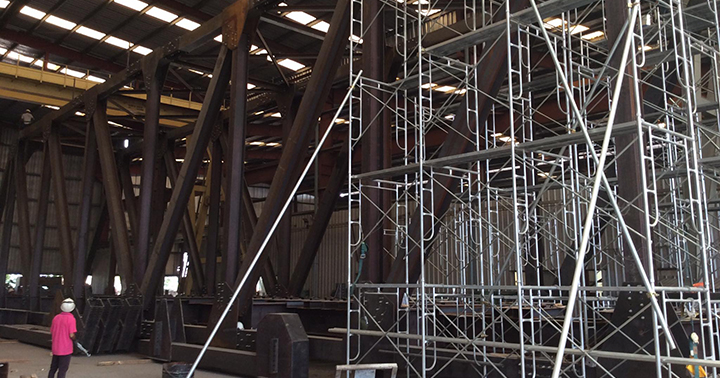The risks of overseas steel fabrication

There are many long term pitfalls to an overseas approach to fabrication. We’ll investigate some of the main concerns that often come with choosing an overseas fabricator:
What Makes Off Shore Fabrication Attractive?
For decades, manufacturers have sought to increase profitability and reduce overhead costs by transferring the production of industrial and metal fabrication overseas. Typically, Asian nations like China, Korea, Taiwan and Malaysia have made overseas production look attractive to domestic builders and developers because of their ability to produce high volumes of materials and ship them back to project site at a lower price than fabricating domestically.
Most of these companies who use overseas production back up their decisions based on numbers. When done correctly, overseas metal fabrication can work best when legwork is done first – simply put, people who do their homework and visit the places responsible for the manufacturing tend to come out with a better understanding of the process and intense business controls it takes to manage a complex overseas fabrication operation.
The Hidden Costs
As the numbers begin to roll in once the fabrication is complete, this is where overseas fabrication begins to take its toll on Western developers and businesses.
Transportation is a massive industry that arguably represents the bulk of the overseas debate. This can be done by sea, or by air, and is usually dictated by the projects lead time schedule. When using ocean freight, expect your delivery times to be hugely extended – and up to the will of Mother Nature firstly and then secondly customs clearance – inevitably drawing out project schedules, making them inconsistent, and speculative at best.
Further, if you have no overseas management team in place, your materials may arrive on-site and not be built to Australia’s rigorous quality and safety standards. Due to a lack of visibility, the pieces could also not be built exactly to spec, meaning you’ll be employing the services of a domestic fabricator to correct the mistakes made during production by your discount fabricator. In addition, an overseas operation can, of course, be quality-controlled by a qualified technician hired by the company, at an additional cost.
There’s also the additional overhead cost of maintaining and employing that overseas manufacturing management team and partner, and do not discount the costs of training new foreign workers to meet welding codes and standards if quality is an issue.
Issues with Quality
Different industries like oil/gas, mining and chemical developments, require high-grade materials and skilled laborer’s and welders to accommodate the high level of quality work associated with such high risk projects.
This can present a problem for a company choosing to manufacture its projects various fabrication requirements in less-industrialized regions with a lack of state-of-the-art equipment and applicable training. As a result, many of the products coming from overseas do not stack up in terms of overall material and build quality. These products in turn, can create issues for the business, who can be held liable for any damage in case of product failure.
The only way to ensure your company has full control over the quality of its fabricated products is to work directly with a local or national fabricator, either in a modular capacity, or on-site. This guarantees that you’re involved in the fabrication process, have an open and transparent relationship with your fabrication team, and receive a top-quality piece of equipment that meets your project specific demands.
Vietnamese Exports Notes – We have done the leg work in Vietnam for Vietnam Steel fabrication for over 10 years , large steel Companies you don’t have as much “pull” , fabrication teams change every project , other Companies charge excessive costs for Quality especially Australian Standards and some Companies promise the world and do not deliver the Standards
Shipping from Vietnam – added costs
We highly recommend Shipping is controlled by Vietnamese Exports to your choice of port in Australia, no extra costs , no custom problems and no late costs for late changes , we handle all aspects of shipping at no extra costs to our client to your port of choice , we average from 12 – 28 days shipping to all Capital Cities
Quality Control
Quality Control, Fabrication to Australian Standards and Communication to our Clients is Vietnamese Exports Number 1 priority . We follow all procedures as per the Australian Standards, A Welding Inspector, Welding Engineer a QA team and myself overlooks all welding and ensures the quality for all our projects. We have learnt and improved to be now , producing VERY HIGH QUALITY STEEL PROJECTS for Australia and at the same time following all Australian Standards and Reporting. Being in Partnership with a Vietnamese Factory for over 5 years we also pass on the Vietnam Costs that can not be achieved by other Australian Companies exporting to Australia. Vietnamese Exports are at the factory over seeing all procedures everyday and ensuring all Projects are successful for our Client
